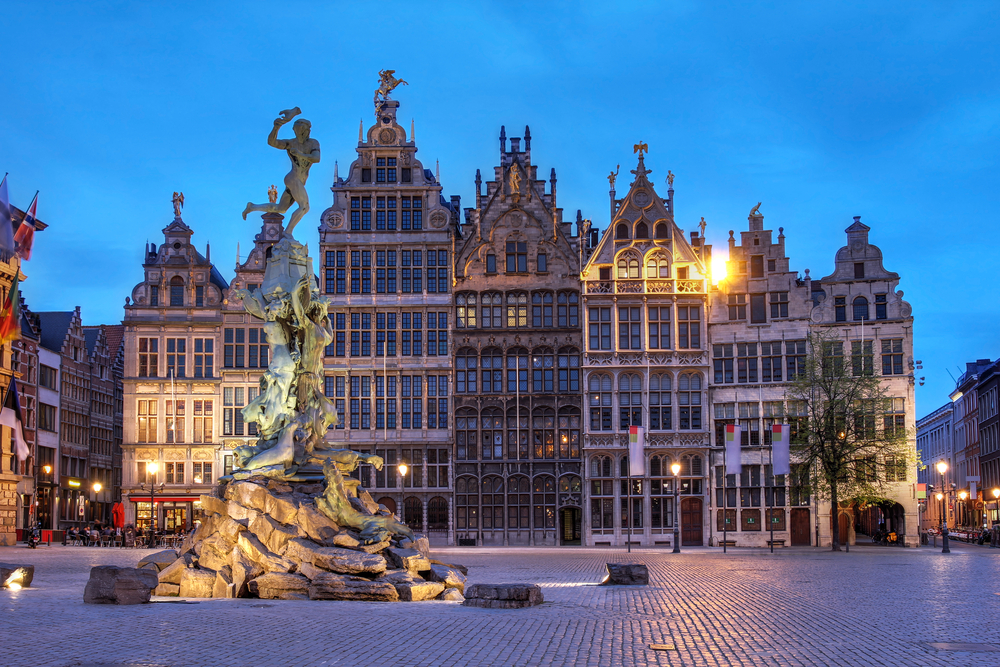Antwerp is a city some visitors to Belgium will overlook, but those who do so risk missing out on a place with a rich heritage and history. Located on the banks of the Scheldt Estuary, the city contains one of the world’s largest ports and for that reason has been a very important centre of trade for centuries. This is reflected in the many fine buildings and historic monuments around town.
The Grote Markt is located in the historic centre of the city and this is the best place to go in order to get a real feel for the place and its heritage. This is a large square that lies right in the heart of the old city. The city hall lies on one side, while there are many 16th century townhouses overlooking it. Many buildings date from the time after a large fire in 1576 that destroyed several buildings in the vicinity. Antwerp’s city hall was itself built in the 16th century.
The original hall was completed in 1406 but it was too small for the needs of such an important port and so construction began on a new, larger one in 1561, with construction taking four years. It was burned down in 1576 in the Spanish Fury, but after this war it was rapidly rebuilt.Visitors can see inside the town hall and it has a very opulent interior, with most of this decor dating from the 19th century.Other features are slightly more recent, such as the Brabo Fountain. This was designed by sculptor Jef Lambeaux in 1887 and depicts the legendary Roman soldier Brabo, who was said to have killed the giant, called Druoon Antigoon, that lived on the banks of the Scheldt and terrorised ships, cutting the hands of sailors who refused to pay a toll to secure their passage. Brabo then cut off the hand of the slain giant and hurled it in the river, and ever since then the hand has been the symbol of the city.
The square today is a scene of markets, beer tents and crowds, a beating heart of the city. There is no doubt a visit will offer a great combination of Antwerp old and new.









